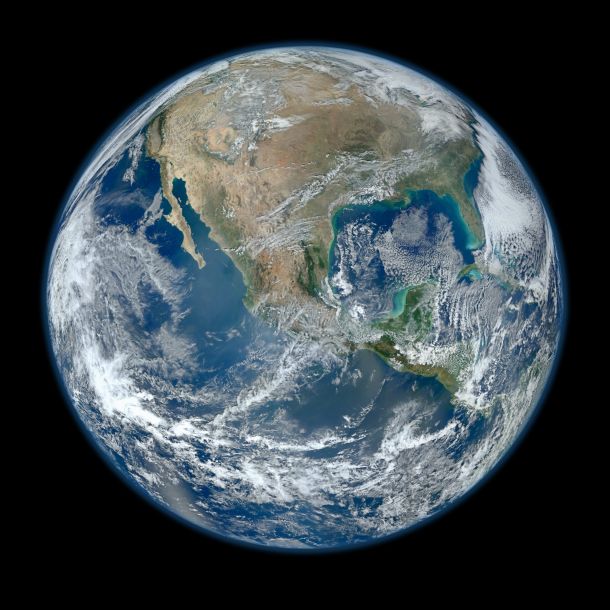Neptune, the eighth and farthest planet from the Sun, is a mysterious and awe-inspiring world that holds a unique place in our solar system. Known as the “Blue Giant,” Neptune captivates our imagination with its vibrant blue color, powerful storms, and intriguing atmosphere.
In this comprehensive post, we explore the wonders of Neptune, unraveling its distinctive features, turbulent weather patterns, fascinating moons, and the ongoing scientific missions that aim to shed light on this enigmatic planet.
Table of Contents
Planet Neptune quick facts
- Planet type: Ice Giant
- Age: 4.6 billion years (and counting)
- Length of year: 60,190 earth days
- One way light time to the Sun: 248.740171 minutes
- Rotation time on its axis: 16 hours

Neptune: An Overview of the Ice Giant
Neptune‘s key characteristics are its size, distance from the Sun, and composition. Its icy nature, composed primarily of hydrogen, helium, and traces of methane are like nothing seen here on planet Earth. Neptune’s unique features are its strong gravitational pull and its position as the windiest planet in the solar system.
The Atmosphere of Neptune
Neptune’s atmosphere is a dynamic and captivating realm, characterized by its deep blue hue and fascinating weather patterns. The structure and composition of Neptune’s atmosphere include presence of methane that gives rise to its distinct color. The violent storms that sweep across Neptune, include the famous Great Dark Spot and the more recent emergence of a new dark spot. Intriguing for Neptune is the phenomena of atmospheric jets and the high-speed winds observed on Neptune.
Neptune’s Ring System
Similar to other gas giants, Neptune possesses a ring system, although it is less pronounced compared to Saturn’s iconic rings. The structure and composition of Neptune’s rings consist of fine particles of ice and dust. The four main ring arcs with their peculiar characteristics, shed light on the formation and dynamics of these elusive features.
Moons of Neptune: Mysteries Unveiled
Neptune is accompanied by a diverse family of moons, each with its own captivating features and mysteries waiting to be unraveled. Some of Neptune’s notable moons include Triton, Nereid, Proteus, and Naiad. Triton, the largest moon of Neptune, exhibits intriguing geysers and a retrograde orbit, suggesting a captured object from the Kuiper Belt. The peculiarities of other moons, include their geological features and the ongoing research aiming to understand their origins and evolution.

Missions to planet Neptune
Here is a list of missions that have been sent to explore or study the planet Neptune:
- Voyager 2 (1989): The Voyager 2 spacecraft, launched by NASA in 1977, conducted a flyby of Neptune in 1989. It provided the first and only close-up observations of the planet, its moons, and its rings, capturing valuable data about its atmosphere, magnetic field, and geology.
- Proposed Neptune Orbiter (Cancelled): In the early 2000s, NASA proposed a dedicated Neptune Orbiter mission to further study the planet and its moons. However, due to budget constraints, the mission was eventually canceled.
- Triton Hopper (Concept): Triton Hopper is a conceptual mission that aims to explore Neptune’s largest moon, Triton. The mission involves a lander or a hopping rover to study the moon’s unique features, including its geysers and potential subsurface ocean.
- Ice Giants Mission (Concept): The Ice Giants Mission, proposed by NASA, aims to send a spacecraft to study both Uranus and Neptune. The mission would include a flyby of Uranus and a detailed study of Neptune, providing comprehensive data about the planet’s composition, atmosphere, and magnetic field.
- ODINUS (Concept): ODINUS (Outer Distant Ice Giant New Frontiers) is a mission concept developed by the European Space Agency (ESA). It aims to send a spacecraft to explore Uranus and Neptune, focusing on the investigation of their atmospheres, magnetic fields, and moons.
- Neptune Odyssey (Concept): Neptune Odyssey is a conceptual mission proposed by a group of scientists and engineers. It envisions a mission to send a spacecraft to Neptune’s moon Triton, conducting detailed studies of its surface, composition, and potential habitability.
It is important to note that while some of these missions are concepts or proposals, they highlight the scientific interest in exploring Neptune and its intriguing moon, Triton. As of now, no specific mission to Neptune has been officially approved or launched since the Voyager 2 flyby in 1989. However, the exploration of Neptune remains an active area of interest for future missions and scientific research.
Voyager 2: Unveiling the Secrets of Neptune
The Voyager 2 spacecraft provided humanity’s first and only close-up encounter with Neptune. The achievements of the Voyager 2 mission include its flyby of Neptune in 1989. The invaluable data collected by the spacecraft expanded our knowledge of Neptune’s atmosphere, rings, and moons. The Voyager 2 mission marked a significant milestone in our understanding of this distant ice giant.
The Prospect of Future Missions
As of now, there are no specific missions planned to explore Neptune in greater detail. However, the potential for future missions and the challenges associated with sending spacecraft to this remote and dynamic planet remain present. The scientific questions that remain unanswered and the possibilities for further exploration of Neptune’s mysteries will guide humanity in future missions to our outer solar system.
Conclusion
Neptune, the mystical blue giant of the outer solar system, continues to mesmerize us with its vibrant color, turbulent atmosphere, and intriguing moons. As we strive to unravel the secrets of this enigmatic planet, we deepen our understanding of planetary dynamics, atmospheric processes, and the vast diversity of celestial bodies in our solar system. Neptune’s captivating allure reminds us of the wonders that await exploration, fueling our curiosity and inspiring further scientific inquiry into the mysteries of the cosmos.
Read more posts on Science.



















Leave a Reply